Table of Contents
Introduction
The digital transformation has had a significant impact on every industry, prompting companies to prioritize delivering optimal digital experiences and adapting to changing consumer demands.
Businesses of all sizes have undergone strategic shifts, seizing opportunities presented by emerging trends, pursuing growth through mergers and acquisitions, and dealing with unforeseen challenges.
Amidst intense competition, prioritizing digital initiatives has become essential for achieving success, even as other business objectives occasionally take precedence over digital transformation.
Navigating the rapidly evolving realm of customer experience technologies can be daunting for any organization. However, understanding the trajectory of digital transformation trends is now more critical than ever, given its pivotal role in driving organizational success.
Stay ahead of the curve by exploring the latest trends in digital transformation for 2024 and uncovering how they can benefit your organization in this enlightening article.
Key Statistics
- The digital economy is anticipated to account for more than 20% of the Gross Domestic Product (GDP) by the year 2026.
- 90% of businesses are engaged in digital initiatives, showcasing a widespread digital transformation priority.
- 40% of organizations have scaled their DX projects by increasing the use of technology, budget, etc
- 74% of workers report their business has a fully implemented Digital Employee Experience (DEX) strategy.
- IDC asserts that AI technology will be inserted into the processes and products of at least 90% of new enterprise apps by 2025.
What is Digital Transformation?
Digital transformation revolutionizes businesses by seamlessly integrating digital technology across all operations, fundamentally altering operational paradigms and enhancing customer value delivery.
Beyond technological adoption, it fosters a cultural shift, necessitating organizations to embrace continuous innovation, experimentation, and a tolerance for failure. Innovative digital transformation solutions harness technology to forge novel customer experiences, cultural dynamics, and operational frameworks. This entails leveraging cutting-edge tools to reshape corporate strategies, aligning them with the demands of the digital era.
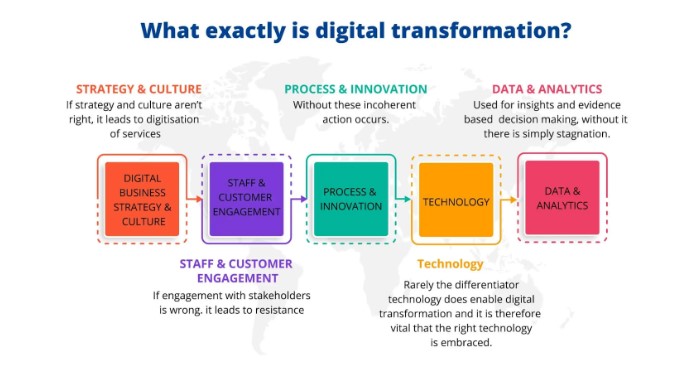
Central to digital transformation strategies is a fundamental pivot towards customer-centricity, diverging from traditional emphasis on sales, marketing, and service delivery.
Over the past decade, prioritizing customer needs has become paramount, guiding the formulation of corporate objectives and driving business agendas.
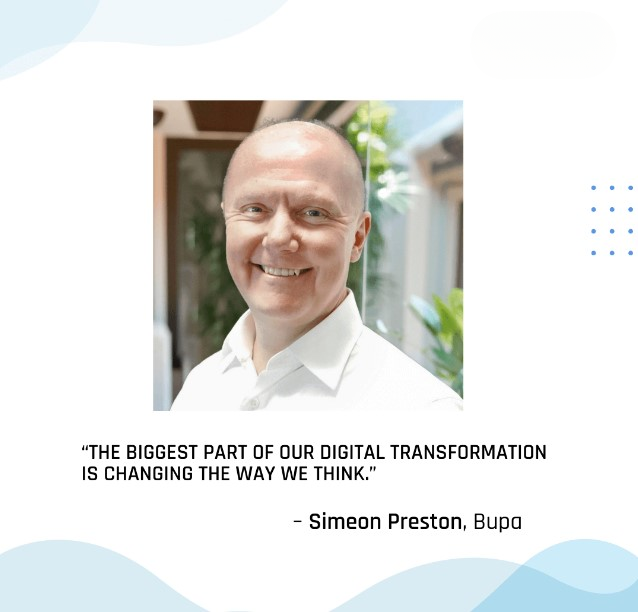
What is the need for Digital Transformation?
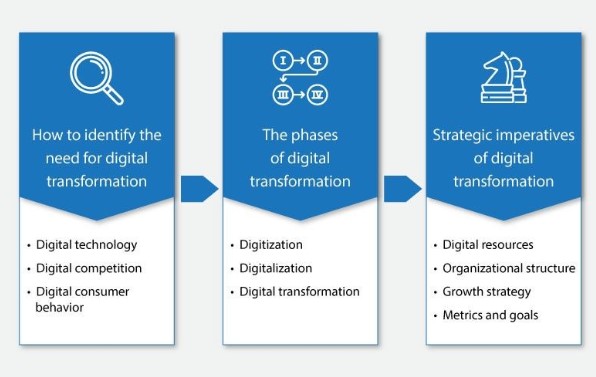
Digital transformation is imperative for businesses for several reasons:
- Staying Competitive: Digital transformation allows companies to remain competitive by adopting new technologies and processes that enhance efficiency, productivity, and innovation.
- Meeting Customer Expectations: Digital transformation enables organizations to meet customer expectations by providing personalized, convenient, and intuitive experiences.
- Driving Growth: Digital transformation opens up new growth opportunities, whether expanding into new markets, launching innovative products and services, or optimizing existing processes to increase revenue and profitability.
- Improving Agility: Traditional business models can be rigid and slow to adapt to change. Digital transformation fosters agility by enabling organizations to quickly respond to market shifts, customer feedback, and emerging trends.
- Enhancing Decision Making: Data-driven insights are crucial for informed decision-making. Digital transformation enables businesses to collect, analyze, and leverage data more effectively, empowering leaders to make strategic decisions with confidence.
- Streamlining Operations: Manual and outdated processes can hinder efficiency and growth. Digital transformation automates and streamlines operations, reducing costs, minimizing errors, and improving overall business performance.
Key Trends Shaping Digital Transformation in 2024
MACH Technologies
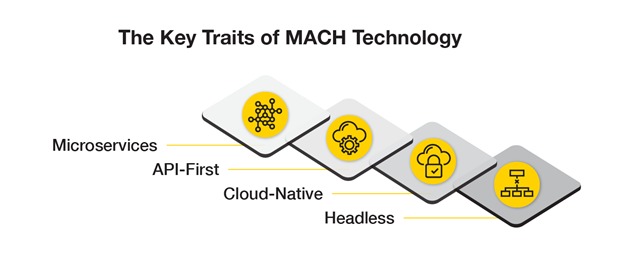
The surge in MACH (Microservices, API-first, Cloud-native, Headless) technologies emerges as a leading digital transformation trend in 2024 and beyond, driven by several key factors:
Versatility and Flexibility:
MACH technologies excel in crafting microservices-based applications that are both headless and API-first. This adaptability empowers businesses to tailor solutions to diverse use cases, swiftly aligning with evolving market demands and consumer preferences.
Cloud-Native Scalability:
MACH technologies embrace a cloud-native ethos, offering unparalleled scalability and efficiency. This approach allows companies to seamlessly deploy new services or updates, ensuring minimal downtime and disruption.
This agility facilitates the continuous evolution of offerings while upholding peak performance and reliability standards.
Modular Architecture:
The modular design of MACH technologies enables effortless scaling and customization of applications as needed. This inherent flexibility caters to organizations seeking to swiftly adapt to fluctuating market dynamics or capitalize on emerging opportunities.
By furnishing businesses with robust development tools, MACH paves the way for resilient applications that thrive in today’s dynamic and fiercely competitive landscape.
Multi-cloud Utilization
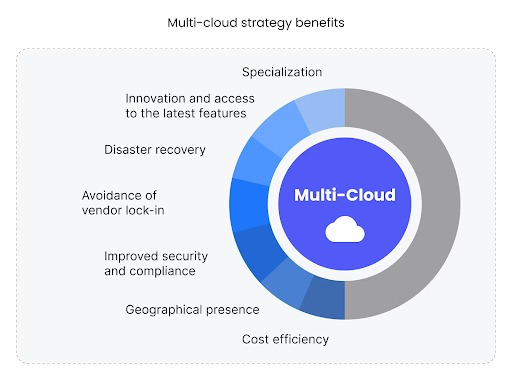
Many companies today use multi-cloud environments to improve their operations. However, managing these diverse cloud infrastructures, especially when moving workloads between them, can be a significant challenge.
Fortunately, solutions like API-led development and containerization offer effective ways to overcome these obstacles.
- API-led development is crucial for unlocking the unique features of applications in multi-cloud environments
- APIs standardize communication protocols and facilitate seamless integration, simplifying the management of different cloud platforms
- Containerization is a proven solution to address complexities associated with multi-cloud environments
- Containers encapsulate applications and their dependencies into portable, self-sufficient units, making it easier to deploy and manage across various cloud infrastructures
- Adopting a multi-cloud approach can significantly improve the outcomes of your digital transformation journey.
Companies can overcome multi-cloud challenges and achieve greater agility, scalability, and innovation with managed services, API-led development, and containerization.
IoT and 5G
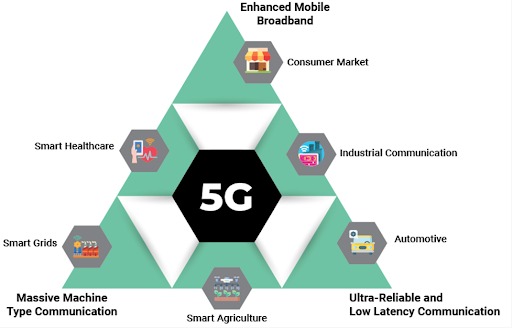
The latest mobile network technology, known as 5G, is a major step forward in connectivity. It offers faster data speeds, minimal latency, improved user experience, better connectivity, and availability, and increased network bandwidth, promising to revolutionize communication.
The convergence of edge computing with 5G is unlocking new possibilities for innovation. For instance, IBM is collaborating with Verizon and Telefonica to provide cloud services that power 5G networks, driving transformational advancements across various industries.
Besides, the integration of automation technologies like artificial intelligence (AI), drone-initiated inspections, and video inspections is set to revolutionize network management.
With these technologies automating routine tasks, potential network issues can be proactively identified and addressed, ensuring seamless operation and optimal performance.
AI for Cutting Down OPEX
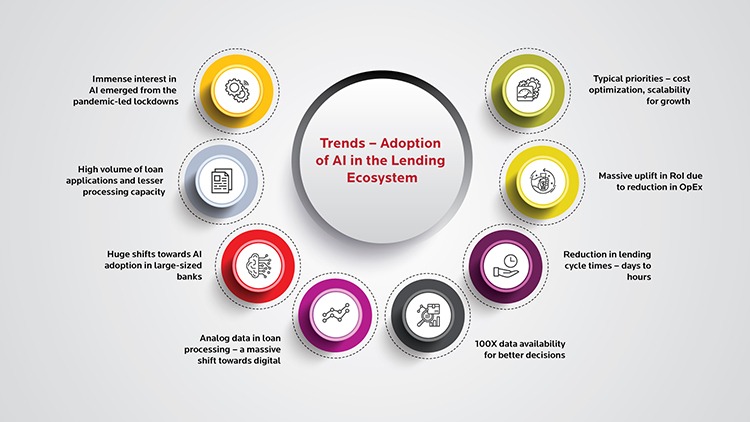
The media and entertainment industry is currently facing a challenging situation where it is experiencing substantial spending but fewer profits. Operational Expenditure (OPEX) has exceeded the profit margins which is a cause of concern for the industry.
Despite trying to gain an early profit or an edge over competitors, the spending has gone out of control. This is the ideal time for the industry to rethink its strategy and come up with a more effective approach to handling content and spending.
Fortunately, this is where AI and Machine Learning (ML) can play a significant role. By utilizing the smart techniques of AI and ML, the industry can efficiently manage content and spending.
The focus should now be on how to utilize the content effectively rather than creating it for the sake of it. The implementation of AI can eventually assist in reducing OPEX and make the industry more profitable.
Enterprise Resource Planning
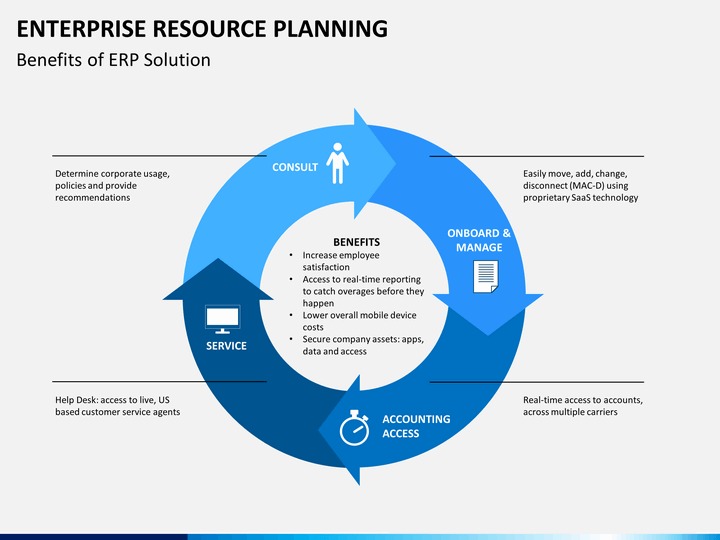
In discussions about successful digital transformation services, people generally tend to think about technology as the primary factor. However, that may only sometimes be the case.
- Digital transformation service providers focus on instilling a new culture within an organization.
- This requires a combination of people, processes, and technology.
- Building an intelligent Enterprise Resource Planning (ERP) system is crucial for organizations.
- Implementing ERP technology can help organizations reduce expenses and improve resource efficiency.
- ERP technology can also enhance overall productivity.
So, if you have already invested in technology and tools, it’s crucial to focus on your back-office operations for continuous refinement to achieve measurable results and high profitability.
The Explosion of Customer Data Platforms
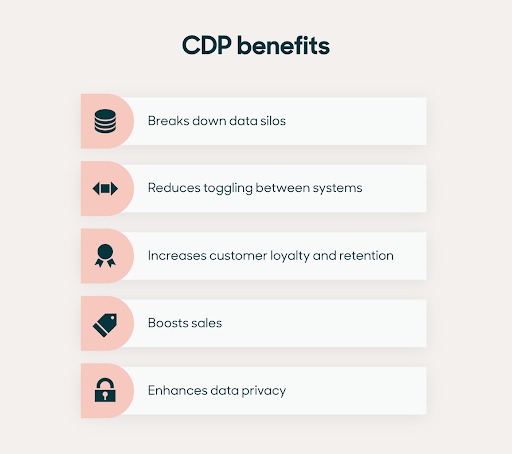
Data is being gathered from various sources in the digital age. Companies now have greater access to information about their clients than in previous times. Interaction with your company or purchasing of products or services provides a lot of data about customers.
This applies to businesses of all sizes. The difference lies in how this data is used to understand customer behavior and preferences. Smaller companies with limited marketing stacks may not face challenges with extracting information from the smaller pool of data.
However, for larger companies with a wide range of products, marketing channels, and customers, it can be difficult to extract relevant information from such a vast amount of data.
This is where a customer data platform can play a significant role.
- A customer data platform (CDP) is a centralized location for customer data.
- CDPs can be used to create more targeted and engaging marketing campaigns for customers.
- CDPs are not exclusively for the marketing department and can be utilized by finance and IT departments.
- CDPs can help in making informed decisions regarding services, products, and other company investments.
Refocus on Cybersecurity
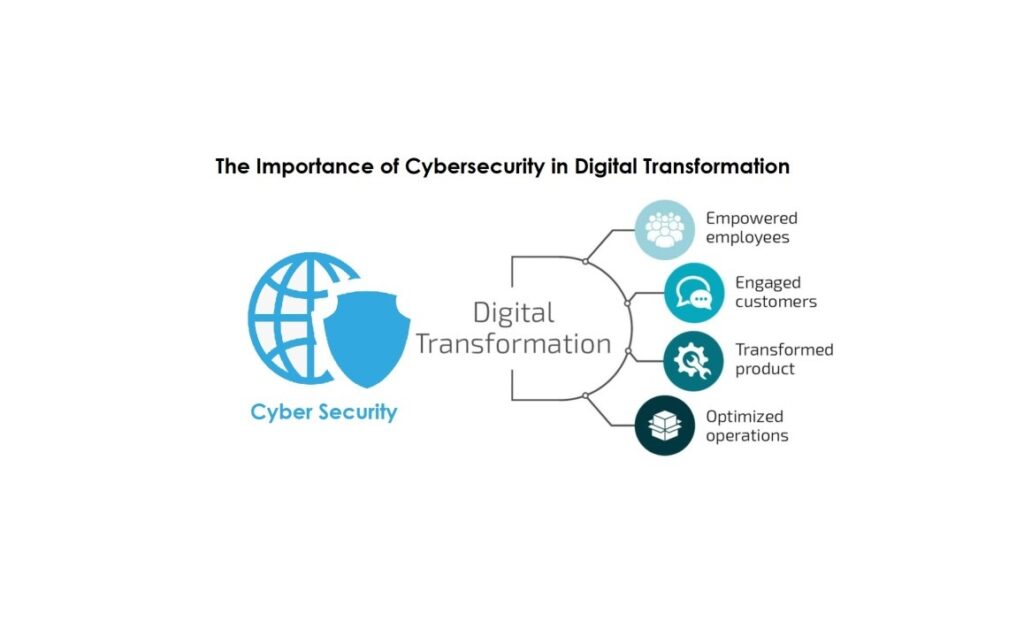
As companies undergo digital transformation, it is becoming increasingly crucial for them to prioritize cybersecurity in 2024. The digital landscape is constantly evolving, which presents both opportunities and challenges.
Digital transformation was initially implemented a few years ago to accelerate process and product development. As part of their quick go-to-market strategy, companies rushed to implement initiatives like DevOps. However, security was overlooked at the time.
In 2020, there were over 445 million recorded cyberattacks, and it is predicted that 33 billion accounts will be breached by 2024, if companies do not understand digital transformation trends and ignore cybersecurity.
Although there is no one-size-fits-all solution for security risks, it is critical to strike a balance between people, processes, and technology. Security teams must ensure that their organization’s security practices keep pace with the speed of digital transformation.
Contactless solutions, digital payments & BNPL
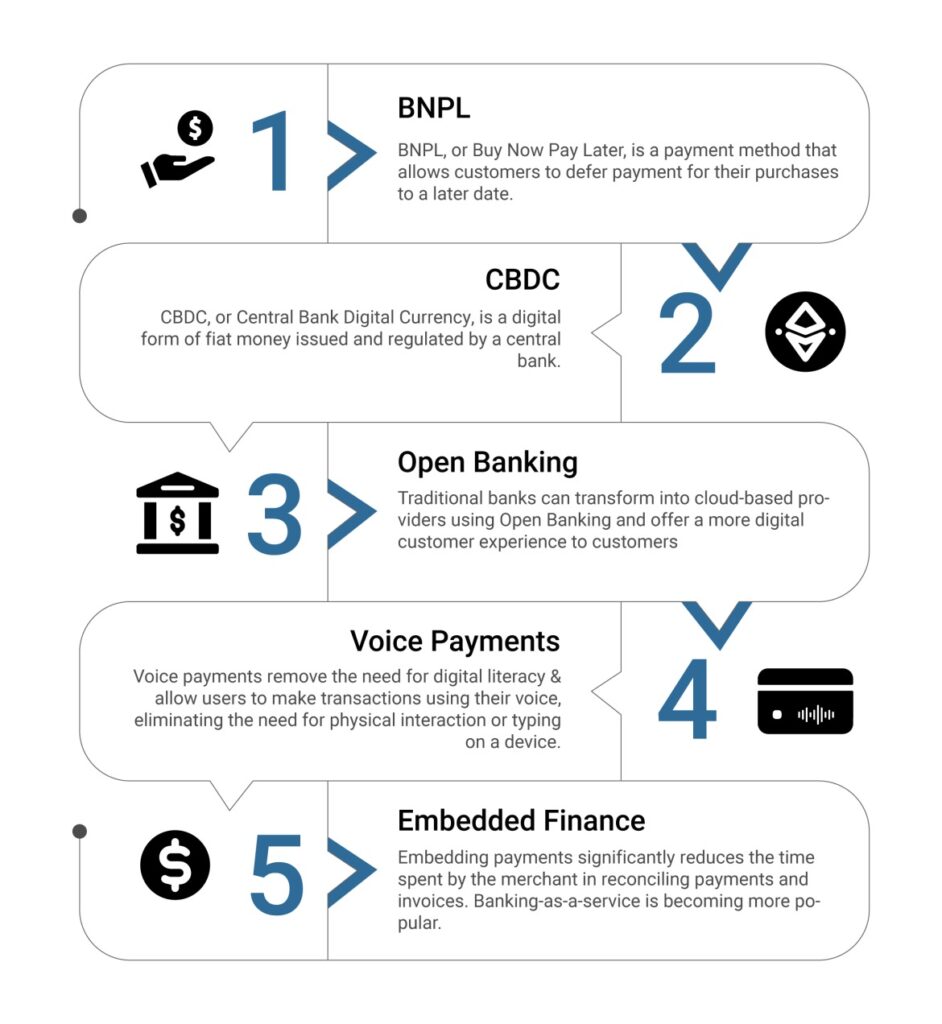
Contactless solutions, digital payments, and Buy Now, Pay Later (BNPL) are three trends that are shaping the digital transformation in 2024. They provide convenience, speed, and security, and are changing the way we interact with money and businesses. Here’s a breakdown:
Contactless solutions:
- What it is: Contactless solutions are a way of making payments by tapping your phone, card, or wearable against a reader instead of swiping or inserting it.
- Impact: Contactless solutions speed up transactions, reduce physical contact, and enhance hygiene.
- Growth: The adoption of contactless solutions skyrocketed due to the pandemic, and it’s expected to continue in 2024.
Digital payments:
- What it is: Digital payments are any electronic method of paying, including mobile wallets, online banking, and peer-to-peer platforms.
- Impact: Digital payments eliminate the need for cash, offer flexibility and ease of use, and integrate seamlessly with online businesses.
- Growth: The digital payments market is expected to reach $9.47 trillion in transaction value by 2024.
Buy Now, Pay Later (BNPL):
- What it is: Buy Now, Pay Later (BNPL) allows consumers to purchase goods and split the cost into interest-free installments over a short period.
- Impact: BNPL increases affordability and impulse purchases while boosting sales for merchants.
- Growth: The BNPL market is predicted to reach $576 billion by 2024.
Combined impact:
- Seamless and frictionless consumer experiences: Users can browse, choose payment methods, and complete transactions quickly and easily.
- Increased business efficiency: These trends streamline checkout processes, reduce processing costs, and provide valuable customer data.
- New opportunities for innovation: These trends create opportunities for advanced solutions like biometrics, voice payments, and embedded finance.
Overall, the combined force of contactless solutions, digital payments, and BNPL is redefining the financial landscape and driving digital transformation across industries.
Conclusion
The year 2024 paints a compelling picture of digital transformation, with a multitude of trends converging to shape the future. Each trend, whether it’s hyper-automation or personalized customer experiences, offers exciting opportunities to enhance efficiency, and agility, and ultimately, create value.
However, navigating this dynamic landscape requires organizations to prioritize adaptability. It’s crucial to stay aware of emerging technologies, shifting customer expectations, and evolving regulations.

Faisal Rafeeq is an SEO, PPC, and Digital Marketing expert. Faisal has worked on multiple e-commerce and web development projects, creating tailored and result oriented solutions. Some of the recent projects include ERPCorp, Wheelrack , TN Nursery, PROSGlobalinc, Patient9, and many more



